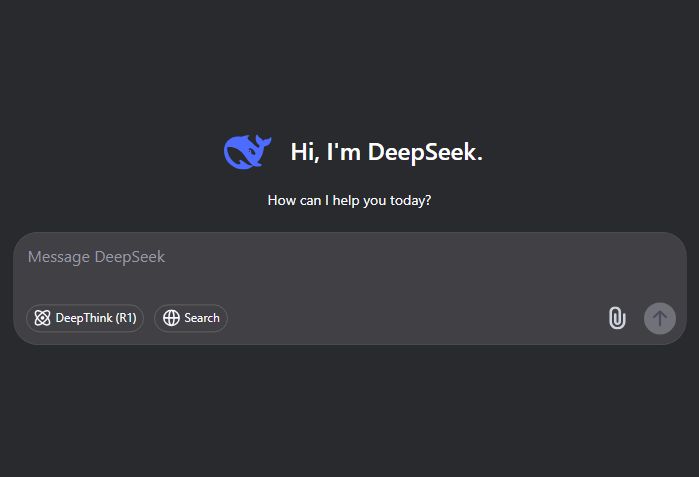
The Efficiency Revolution: How New Competitors Are Reshaping the AI Landscape Beyond GPT-4
The Shifting Tides of AI Supremacy: Efficiency Takes Center Stage
For years, the narrative in artificial intelligence has been dominated by a simple, powerful mantra: bigger is better. The race to AI supremacy seemed to be a straightforward contest of scale, with industry giants like OpenAI setting the pace. Each new release, from GPT-3.5 to GPT-4, was defined by staggering parameter counts and training on ever-larger datasets, pushing the boundaries of what was computationally possible. However, the latest GPT Models News reveals a dramatic shift in this paradigm. A new wave of formidable global competitors is emerging, not by out-scaling the incumbents, but by out-smarting them. These challengers are proving that architectural elegance and training efficiency can yield performance on par with, or even exceeding, the titans of the industry, all while using a fraction of the computational resources. This efficiency revolution is more than just a technical curiosity; it’s a democratizing force poised to redefine the entire GPT Ecosystem News, from development and deployment to accessibility and cost, heralding a new era of AI innovation.
The New Frontier: Architectural Innovation Over Brute-Force Scaling
The traditional approach to building more powerful Large Language Models (LLMs) has been to aggressively scale up three primary vectors: the number of model parameters, the size of the training dataset, and the amount of compute used for training. While this method has produced incredibly capable models, it has also led to unsustainable costs and environmental concerns, creating a high barrier to entry. The latest GPT Competitors News highlights a departure from this brute-force methodology, focusing instead on sophisticated and efficient design.
Beyond Monolithic Models: The Rise of Smart Architectures
One of the most significant trends fueling this shift is the adoption of novel model architectures. Instead of creating dense, monolithic models where every parameter is activated for every single token processed, new designs are embracing sparsity. The Mixture-of-Experts (MoE) architecture is a prime example. In an MoE model, the network is composed of numerous smaller “expert” sub-networks. For any given input, a routing mechanism activates only a select few relevant experts. This approach, seen in models from competitors like Mistral AI, allows for a massive increase in the total number of parameters (enhancing model knowledge) without a proportional increase in computational cost during inference. This is a core topic in recent GPT Architecture News, as it allows a model with, for instance, 100 billion total parameters to have the inference speed and cost of a much smaller 15-billion-parameter dense model.
A Global AI Renaissance
This innovation is not confined to Silicon Valley. A truly global movement is underway. French startup Mistral AI has gained significant traction with its powerful open-source models. In Asia, tech startups are making headlines by releasing highly capable models trained with remarkable efficiency, demonstrating sophisticated understanding of both model architecture and data curation. These companies are not just creating “me-too” products; they are contributing fundamental research and releasing models that challenge the top performers on major leaderboards. This global competition is accelerating the pace of innovation, providing developers with more choices and pushing the entire field forward, a key theme in current GPT Trends News.
Deconstructing the Efficiency Paradigm: The Technical Underpinnings

Achieving top-tier performance with significantly less compute is not magic; it’s the result of meticulous engineering and a multi-faceted approach to optimization that spans the entire model lifecycle, from data preparation to final deployment. This focus on efficiency is a core driver of the latest GPT Training Techniques News and is changing how organizations think about building and using AI.
The Art and Science of Data Curation
The mantra is no longer “more data,” but “better data.” Competitors are gaining an edge by investing heavily in the quality of their training corpora. This involves several advanced techniques:
- Aggressive Filtering: Sophisticated pipelines are used to de-duplicate data, remove low-quality content, and filter out personally identifiable information (PII), which also addresses GPT Privacy News.
- Strategic Data Mixing: The composition of the dataset is crucial. A carefully balanced mix of high-quality web text, books, scientific papers, and, critically, code, can significantly boost a model’s reasoning and logical capabilities. The emphasis on code is a recurring theme in GPT Code Models News, as it teaches the model structured thinking.
- Synthetic Data Generation: Using existing powerful models to generate high-quality, diverse training examples is a burgeoning field. This allows model creators to fill gaps in their datasets and focus on specific capabilities they want to enhance.
Optimization from Pre-training to Post-deployment
Efficiency is baked in from the very beginning. Beyond architecture, model optimization techniques are critical for reducing resource consumption. These methods, central to GPT Efficiency News, ensure that models are lean and fast without sacrificing quality.
- GPT Quantization: This process involves reducing the precision of the model’s weights, for example, from 32-bit floating-point numbers down to 8-bit or even 4-bit integers. This drastically reduces the model’s memory footprint and can significantly speed up inference on compatible hardware.
- GPT Distillation: In this technique, a large, powerful “teacher” model is used to train a smaller, more efficient “student” model. The student model learns to mimic the output distribution of the teacher, effectively inheriting its capabilities in a much more compact form.
- Pruning: This involves identifying and removing redundant or unimportant connections (weights) within the neural network after training, creating a sparser, faster model.
Case Study: The “Efficio-10B” Hypothetical Model
Imagine a hypothetical model, “Efficio-10B.” It’s a 10-billion-parameter model, but it uses an MoE architecture with 8 experts, so its active parameter count during inference is closer to a 2-billion-parameter model. It was trained not on 10 trillion tokens of unfiltered web data, but on a highly curated 2-trillion-token dataset rich in academic and code-based content. For deployment, it undergoes 4-bit quantization. On a standard GPT Benchmark News leaderboard like MMLU (Massive Multitask Language Understanding), Efficio-10B might score competitively with a 30-billion-parameter dense model from a previous generation. The key difference? Its low GPT Latency & Throughput News profile means it can run on consumer-grade GPUs or even on-device (a major topic in GPT Edge News), opening up a world of applications that were previously impractical due to cost and hardware constraints.
Implications for the Global AI Ecosystem
The rise of efficient, high-performance models from a diverse set of global players has profound and far-reaching implications. This shift is not just an incremental update; it’s a structural change that will reshape markets, empower developers, and alter the trajectory of AI applications across every industry.
Democratizing Access to State-of-the-Art AI

For too long, cutting-edge AI has been the exclusive domain of a few tech giants with access to massive server farms. Efficient models, especially those released under permissive open-source licenses, shatter this exclusivity. Startups, academic institutions, and individual developers can now download, fine-tune, and deploy powerful models without needing nine-figure budgets for hardware. This democratization, a major theme in GPT Open Source News, is a catalyst for innovation. It allows for more experimentation in areas like GPT Fine-Tuning News, where smaller organizations can create highly specialized models for niche tasks, from legal document analysis in GPT in Legal Tech News to creating dynamic NPCs in GPT in Gaming News.
A Paradigm Shift in Application Development and Deployment
The practical benefits of efficiency are immense. Lower inference costs and reduced latency directly translate to better and more affordable products.
- Real-time Interactivity: Responsive GPT Assistants and GPT Chatbots become the norm, not a premium feature. Complex, multi-step GPT Agents can execute tasks without racking up exorbitant API bills.
- New Application Frontiers: Industries can now explore use cases that were previously cost-prohibitive. In healthcare, this could mean real-time diagnostic aids running locally in clinics (GPT in Healthcare News). In finance, it enables low-latency analysis of market data (GPT in Finance News). For creative professionals, it means faster iteration on AI-generated content (GPT in Content Creation News).
- Hardware and Deployment Flexibility: The focus of GPT Deployment News is shifting. Businesses are no longer locked into specific cloud providers or required to invest in top-of-the-line GPUs. Efficient models can run on a wider range of GPT Hardware, including CPUs and specialized AI accelerators, making integration into existing enterprise infrastructure far simpler.
Navigating the New Landscape: Recommendations and Considerations
While this competitive and efficiency-driven environment is overwhelmingly positive, it also introduces new complexities for businesses and developers. Navigating this landscape requires a strategic approach that balances opportunity with due diligence.

Opportunities for Adopters
The primary advantage is choice. Organizations are no longer limited to a single provider’s API. They can now select from a variety of open-source and proprietary models, choosing the one that offers the best performance-to-cost ratio for their specific use case. This can lead to a dramatic reduction in operational expenses, especially for applications with high inference volume. It also opens the door to building more sophisticated, custom AI solutions in-house, leveraging the vibrant GPT Custom Models News scene to create a competitive advantage.
Challenges and Best Practices
With more options comes the burden of choice. Relying solely on public benchmarks can be misleading, as they may not reflect real-world performance on your specific tasks.
- Best Practice 1: Benchmark for Your Use Case. Before committing to a model, test the top contenders on your own data and workflows. Evaluate not just accuracy, but also latency, cost, and ease of integration with your existing GPT Tools.
- Best Practice 2: Consider the Entire Ecosystem. A model is more than its weights. Evaluate the quality of the documentation, the responsiveness of the community or support team, and the availability of GPT Integrations.
- Best Practice 3: Stay Vigilant on Safety and Ethics. Regardless of the provider, issues covered in GPT Ethics News, such as bias, fairness, and safety, remain paramount. Ensure any model you deploy aligns with your organization’s responsible AI principles. Keep abreast of the evolving global standards discussed in GPT Regulation News.
Conclusion: A More Diverse and Sustainable AI Future
The narrative of AI development is undergoing a profound and exciting rewrite. The era defined by the singular pursuit of scale is giving way to a more nuanced, multi-polar world where efficiency, architectural ingenuity, and data quality are the new currencies of innovation. The rise of powerful, efficient models from a diverse array of global competitors is not merely a footnote in ChatGPT News or a prelude to GPT-5 News; it is a fundamental market correction. This shift democratizes access to cutting-edge technology, reduces the economic and environmental costs of AI, and empowers a new generation of builders to create applications previously thought impossible. For businesses and developers, this competitive landscape offers unprecedented choice and opportunity. By embracing this new paradigm and focusing on strategic adoption, we can collectively build a more accessible, sustainable, and innovative AI future. The most exciting GPT Future News may not be about the biggest model, but the smartest one.



